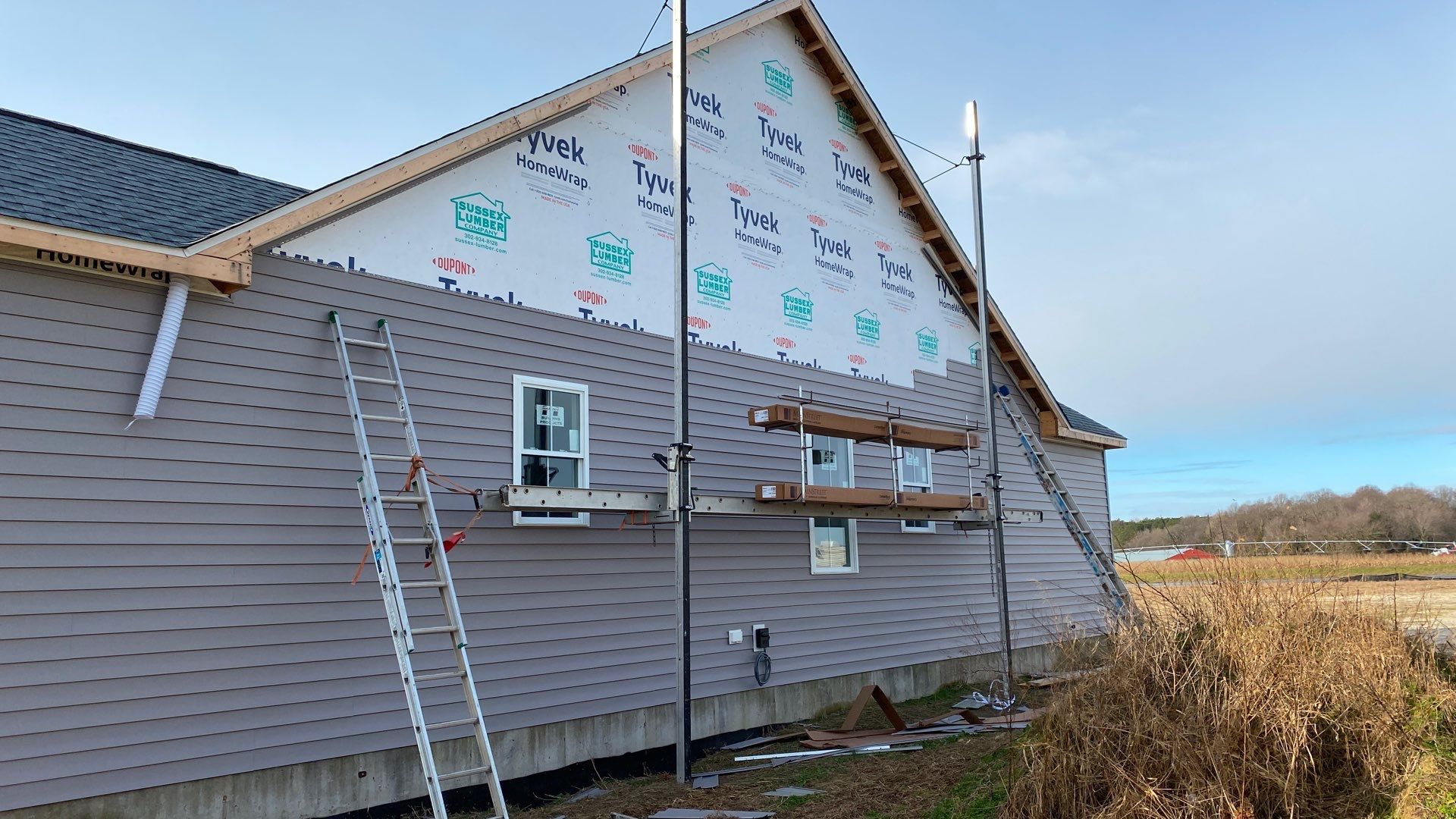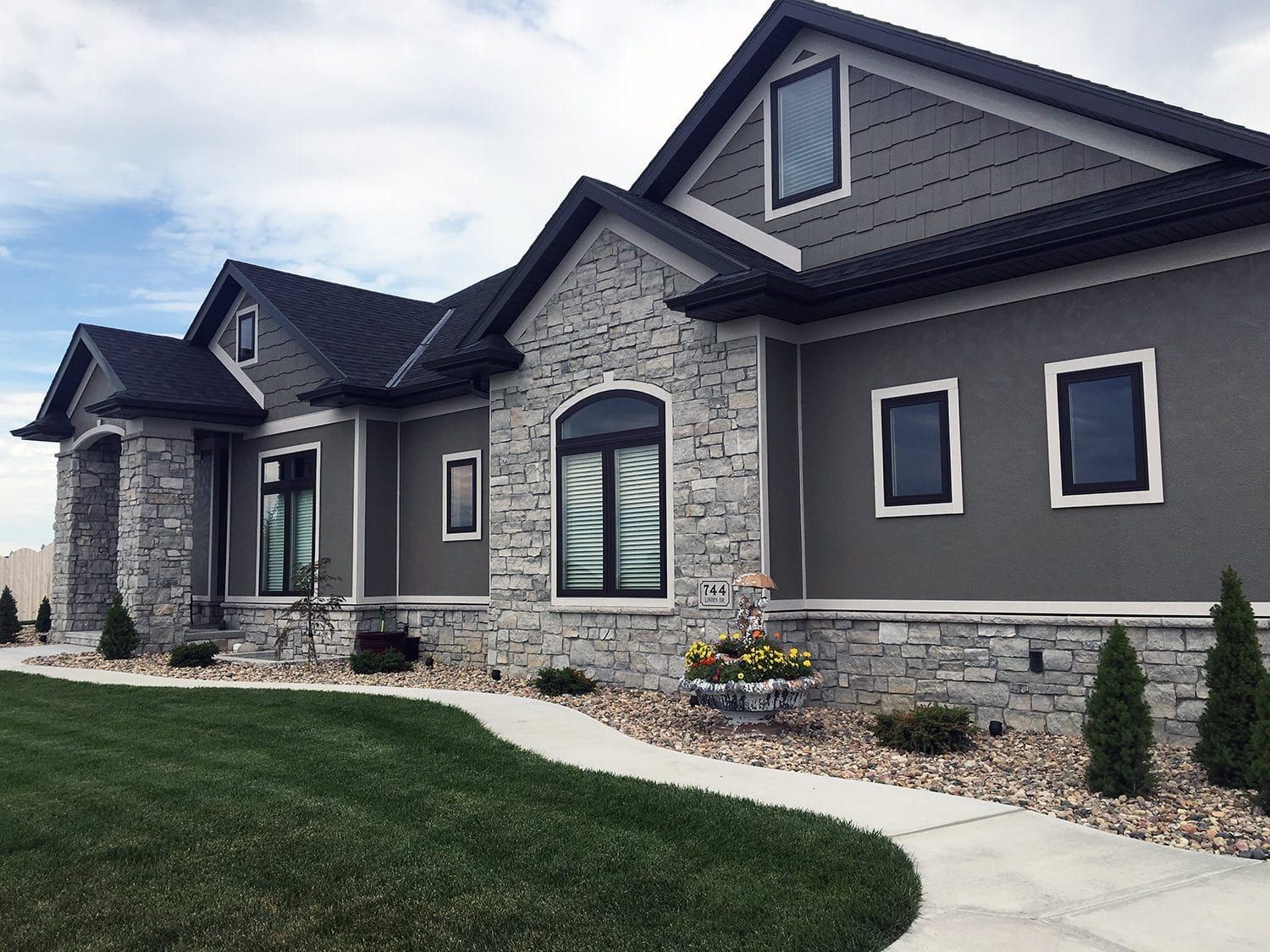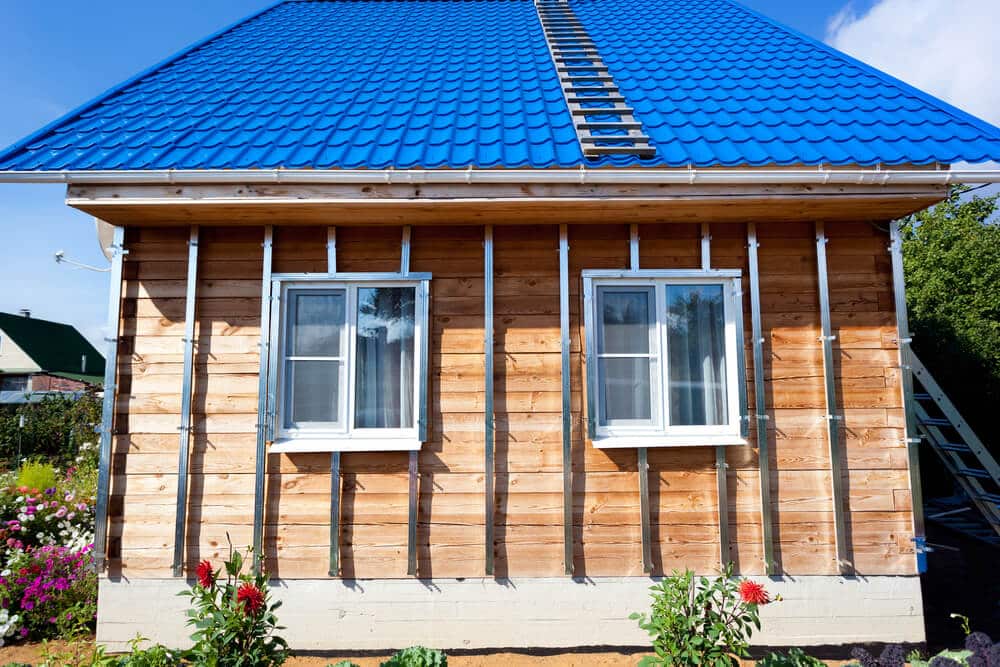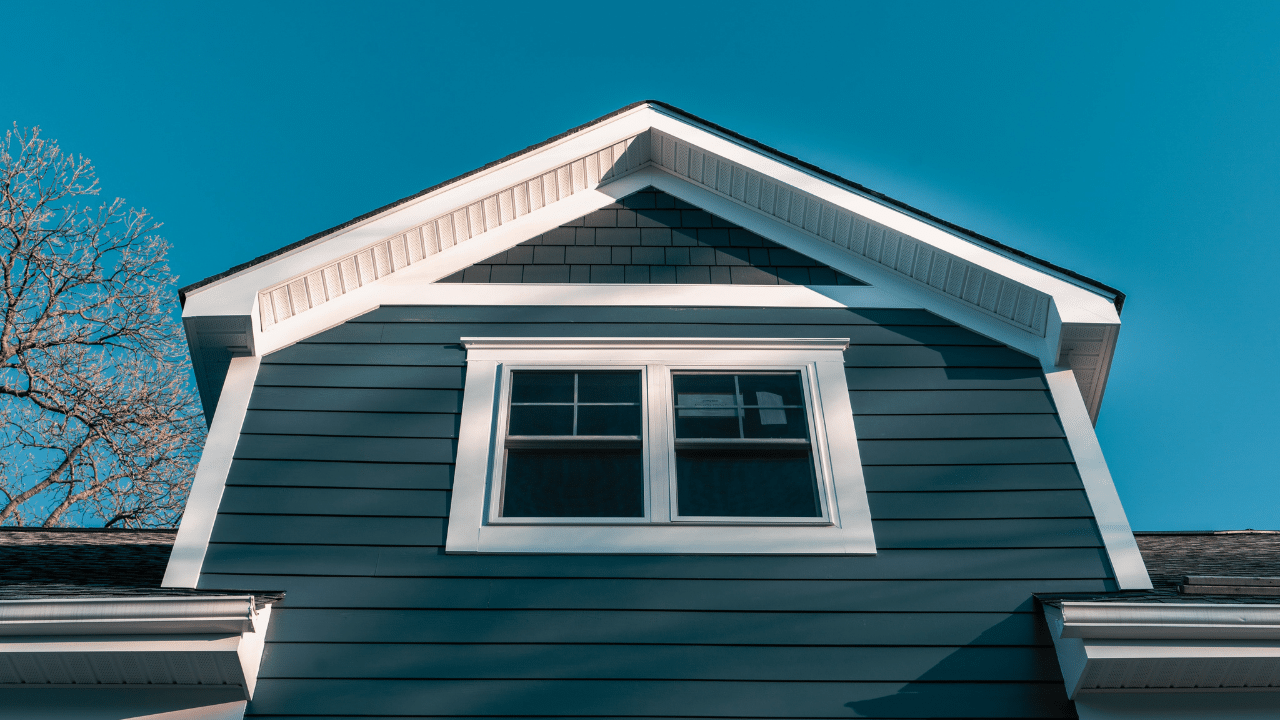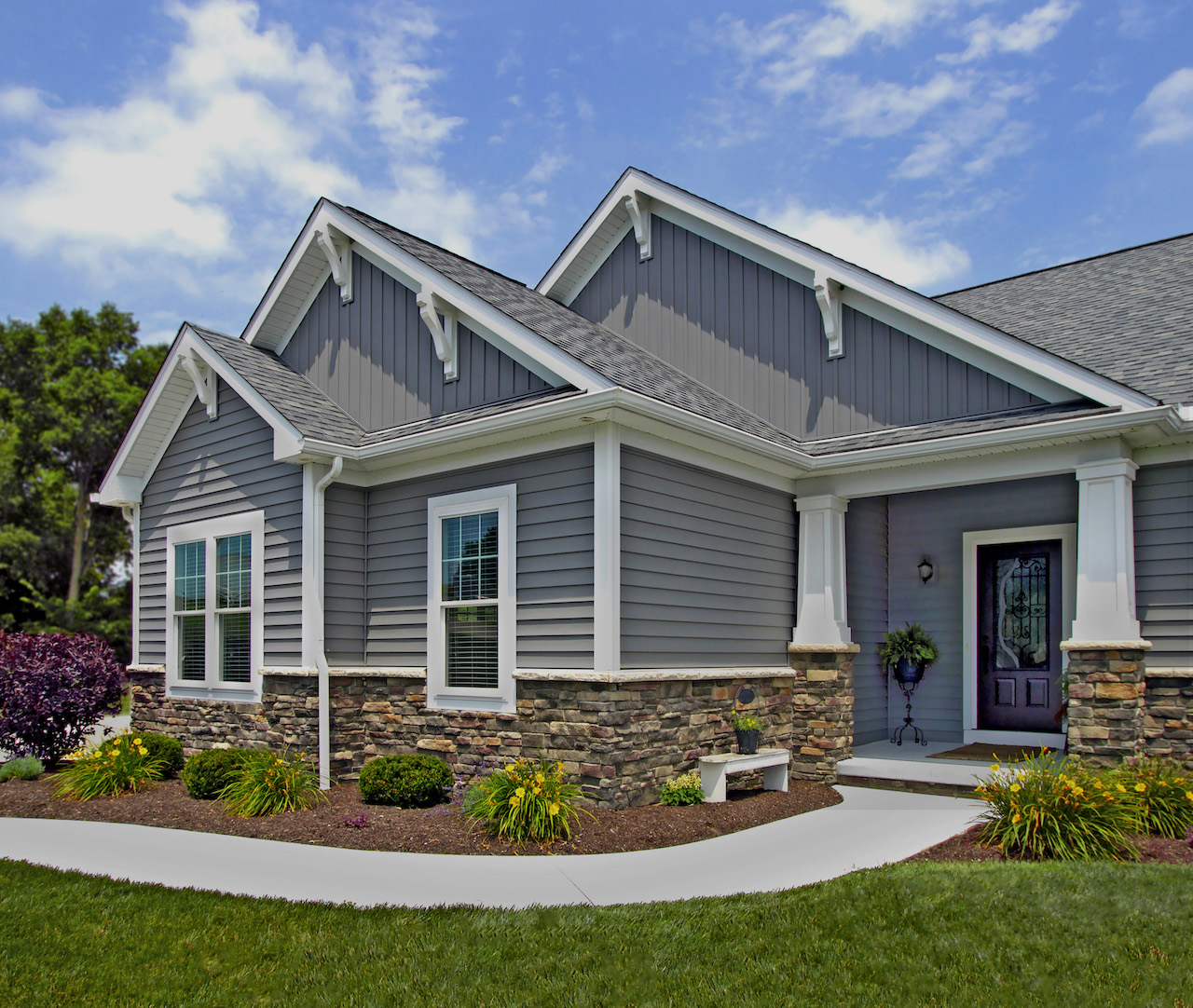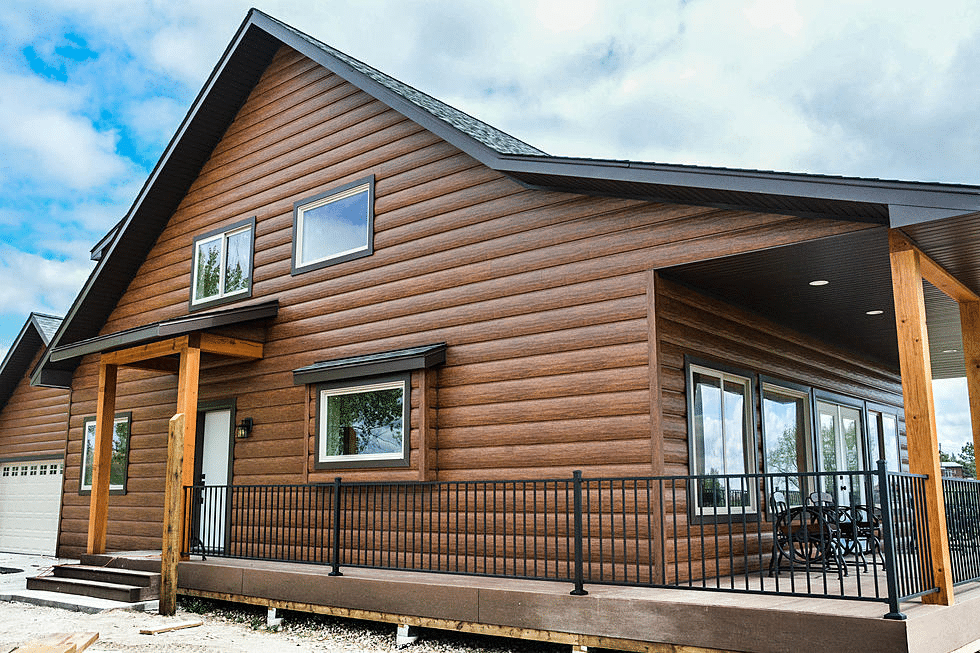Durable Insulated Siding Options
Durable insulated siding options offer a smart blend of aesthetics and energy efficiency. Choosing the right siding can significantly impact your home’s curb appeal, energy bills, and long-term maintenance. This guide explores various durable materials, installation techniques, and cost considerations to help you make an informed decision.
From the robust protection of fiber cement to the low-maintenance appeal of vinyl, we’ll delve into the pros and cons of each option. We’ll also examine the crucial role of insulation R-value in energy savings and how different installation methods affect both cost and longevity. Understanding these factors empowers you to select the perfect siding for your home and budget.
Types of Durable Insulated Siding
Choosing the right insulated siding can significantly impact your home’s energy efficiency, curb appeal, and longevity. Several durable options exist, each with its own advantages and disadvantages regarding lifespan, maintenance, and cost. Understanding these differences is crucial for making an informed decision.
Fiber Cement Insulated Siding
Fiber cement siding is a composite material made from a mixture of cement, cellulose fibers, and other additives. The manufacturing process involves mixing these ingredients, forming them into panels under high pressure, and then curing them in a controlled environment. This process creates a strong, durable, and fire-resistant product. Insulation is often added during manufacturing by incorporating a foam core into the panel. Fiber cement boasts a long lifespan, typically lasting 50 years or more with minimal maintenance beyond occasional cleaning. However, it’s more expensive upfront than some other options.
Vinyl Insulated Siding
Vinyl siding is a popular choice due to its affordability and ease of installation. It’s manufactured by extruding polyvinyl chloride (PVC) resin into various profiles and colors. Insulation is usually achieved by adding a foam backing to the vinyl panel. While vinyl is relatively low-maintenance, requiring only occasional cleaning, its lifespan is shorter than fiber cement, generally lasting 20-30 years. Its susceptibility to damage from impact and extreme temperatures should also be considered.
Engineered Wood Insulated Siding
Engineered wood siding, often made from composite materials like wood fiber and polymers, offers a natural look while incorporating insulation. The manufacturing process involves combining these components under pressure and heat to create durable panels. These panels often have a protective outer layer to resist moisture and insects. Engineered wood siding offers a good balance between cost and lifespan, typically lasting 25-40 years. Maintenance requirements are moderate, involving periodic cleaning and occasional repairs.
Metal Insulated Siding
Metal siding, typically made of aluminum or steel, is exceptionally durable and long-lasting, often exceeding 50 years with proper care. The manufacturing process involves forming the metal sheets into various profiles and then adding insulation, often a rigid foam core, before applying a protective coating. Metal siding is highly resistant to fire, insects, and moisture. While requiring minimal maintenance, the initial cost is often higher than vinyl or engineered wood.
Comparison of Durable Insulated Siding Options
| Material | Lifespan (Years) | Maintenance | Cost |
|---|---|---|---|
| Fiber Cement | 50+ | Low | High |
| Vinyl | 20-30 | Low | Low |
| Engineered Wood | 25-40 | Moderate | Medium |
| Metal | 50+ | Low | High |
Insulation Properties and R-Value
Choosing insulated siding is a significant investment in your home’s energy efficiency. Understanding the role of R-value is crucial for making an informed decision and maximizing your return on investment. R-value is a measure of a material’s resistance to heat flow, essentially indicating how well it insulates. Higher R-values mean better insulation.
R-value directly impacts your home’s energy efficiency and, consequently, your heating and cooling costs. A higher R-value in your siding means less heat escapes during winter and less heat enters during summer. This translates to lower energy bills, reduced reliance on HVAC systems, and a more comfortable living environment year-round. Conversely, siding with a low R-value will result in greater energy consumption and higher utility costs. The difference can be substantial, especially in regions with extreme temperature variations. For example, a home in a cold climate with high-R-value siding might see a 20-30% reduction in heating costs compared to a home with low-R-value siding.
R-Value and Insulation Thickness
The relationship between insulation thickness and R-value is directly proportional for most siding materials. Thicker insulation generally provides a higher R-value. However, the exact relationship varies depending on the material used. For instance, fiberglass insulation might offer an R-value of 3.7 per inch of thickness, while rigid foam insulation might offer an R-value of 5 or more per inch. This means that a 6-inch thick fiberglass panel would have an R-value of approximately 22 (6 inches * 3.7 R/inch), whereas a 6-inch thick rigid foam panel would have an R-value of approximately 30 (6 inches * 5 R/inch). Manufacturers’ specifications should always be consulted for precise R-value calculations.
Visual Representation of Heat Transfer Reduction
Imagine a cross-section of a wall with siding. On one side, represent the outside air temperature (let’s say it’s freezing outside). On the other side, show the inside of the house at a comfortable temperature. Without insulation, the heat flows directly from the warm interior to the cold exterior, indicated by numerous arrows pointing from the warm side to the cold side. Now, add a layer of insulation (represented by a thick, textured band within the wall). The arrows representing heat transfer are now significantly fewer and shorter, illustrating how the insulation effectively slows down and reduces the rate of heat transfer. The insulated section will show a noticeably smaller temperature difference between the inner and outer surfaces compared to the uninsulated section, highlighting the insulation’s effectiveness in maintaining a stable interior temperature.
Installation Methods and Techniques
Proper installation is crucial for ensuring the longevity and effectiveness of insulated siding. The process varies slightly depending on the type of siding used, but generally involves careful preparation, precise measurements, and attention to detail. Improper installation can lead to issues such as water damage, energy inefficiency, and an unsightly appearance.
Insulated Vinyl Siding Installation
Installing insulated vinyl siding typically involves several key steps. First, the existing siding must be removed, and the underlying wall sheathing inspected for damage. Any necessary repairs, such as replacing rotted wood or patching holes, should be completed before proceeding. Next, furring strips may need to be installed to create a level surface and proper spacing for the siding. Then, J-channels are installed at the corners and around windows and doors to provide a clean finish and protect the edges of the siding panels. Finally, the siding panels are installed, overlapping each panel slightly and snapping them into place. Each panel should be carefully aligned and checked for proper fit before moving on to the next. Finishing involves installing trim pieces to conceal the edges and complete the aesthetic look.
Insulated Fiber Cement Siding Installation
Fiber cement siding installation shares some similarities with vinyl, but also presents unique challenges. Initial preparation, including removing old siding and repairing the wall sheathing, is identical. However, fiber cement boards are heavier and more difficult to handle than vinyl, requiring more physical effort and potentially the use of specialized tools. Because fiber cement is more prone to cracking, precise cutting and careful handling are paramount. The installation process also involves using fasteners specifically designed for fiber cement, which are typically longer and more robust than those used for vinyl. Additionally, fiber cement siding often requires more attention to sealing and caulking to prevent water penetration. The final step again involves adding trim pieces for a professional finish.
Professional vs. DIY Installation
Professional installers possess the experience, specialized tools, and knowledge to handle the complexities of siding installation efficiently and correctly. They can accurately assess the condition of the existing wall, choose appropriate materials, and ensure proper installation techniques are followed, leading to a superior, long-lasting result. DIY installation, while potentially cost-saving, often presents challenges such as improper measurements, inadequate preparation, and difficulty with complex installations around corners and openings. This can lead to costly mistakes and compromised energy efficiency. For example, a DIY installer might struggle to achieve a perfectly straight line or consistently maintain proper panel overlap, resulting in a less aesthetically pleasing and less weather-resistant installation.
Necessary Tools and Equipment
Proper siding installation requires a range of tools and equipment. These include measuring tapes, levels, saws (circular saw for fiber cement, utility knife for vinyl), drills, nail guns (for fiber cement), safety glasses, work gloves, and possibly a scaffolding system for taller buildings. Specialized tools like J-channel installation tools and siding panel cutters can also enhance efficiency and precision.
Safety Precautions
- Always wear appropriate safety glasses and gloves to protect against eye and hand injuries.
- Use caution when operating power tools and follow manufacturer’s instructions carefully.
- Maintain a clean and organized work area to minimize the risk of tripping or falling.
- Use appropriate fall protection equipment when working at heights.
- Handle fiber cement siding carefully to avoid inhaling dust or causing cuts.
- Dispose of waste materials responsibly according to local regulations.
Cost and Budget Considerations
Insulated siding offers long-term energy savings, but the initial investment can be significant. Understanding the cost factors involved is crucial for budgeting and making informed decisions. This section breaks down the average costs, influencing factors, and strategies for cost optimization.
The cost of insulated siding varies greatly depending on several factors. Material selection plays a significant role, with some options being considerably more expensive than others. Labor costs also fluctuate based on geographical location, project complexity, and the contractor’s experience. Permitting fees and any necessary preparation work, such as removing existing siding, add to the overall expense.
Average Cost Per Square Foot
Estimating the cost of insulated siding requires considering both material and labor. Material costs alone can range from $3 to $20 per square foot, depending on the type of siding chosen. For example, vinyl insulated siding typically falls on the lower end of this spectrum, while fiber cement or engineered wood options are considerably more expensive. Adding labor costs, a typical range for a complete installation would be between $8 and $25 per square foot, depending on the chosen material and complexity of the project.
Factors Influencing Overall Installation Costs
Several factors contribute to the total cost of insulated siding installation. These include the size of the house, the complexity of the project (such as the presence of dormers or intricate architectural details), the cost of materials chosen (as previously discussed), and the labor rates in your specific region. The need for permits and inspections adds another layer of expense. Finally, any necessary preparatory work, such as removing old siding or addressing underlying structural issues, will impact the overall budget.
Cost Optimization Strategies
While prioritizing durability and energy efficiency is paramount, several strategies can help optimize costs without compromising quality. Choosing a less expensive, yet still durable, siding option like vinyl can significantly reduce material costs. Planning the project carefully and ensuring proper preparation before installation can minimize labor costs. For example, removing old siding yourself (if you have the skills and time) can lead to substantial savings. Shopping around for contractors and obtaining multiple quotes allows for price comparisons and the identification of the most competitive options. Finally, carefully considering the scope of the project and prioritizing essential upgrades over less critical ones can help to control expenses.
Cost Estimates for Different Siding Types and Installation Scenarios
The following table provides estimated costs for different insulated siding types, considering both DIY and professional installation. These are averages and may vary based on location, material quality, and project complexity. Always obtain multiple quotes from reputable contractors for accurate cost estimates specific to your project.
| Siding Type | Material Cost (per sq ft) | DIY Labor Cost (per sq ft) | Professional Installation Cost (per sq ft) |
|---|---|---|---|
| Vinyl | $3 – $6 | $2 – $4 | $5 – $10 |
| Fiber Cement | $8 – $15 | $5 – $8 | $12 – $20 |
| Engineered Wood | $10 – $20 | $7 – $10 | $15 – $25 |
Maintenance and Repair
Proper maintenance is key to extending the lifespan of your insulated siding and maintaining its aesthetic appeal. Regular cleaning and inspections can prevent minor issues from escalating into costly repairs. Different siding materials require slightly different care, so understanding your siding type is crucial.
Routine Maintenance Procedures
Regular cleaning is essential for all types of insulated siding. This involves removing dirt, debris, and cobwebs using a soft brush, garden hose, and mild detergent. Avoid harsh chemicals or abrasive cleaners that can damage the siding’s finish. For higher areas, a pressure washer can be effective, but use a low-pressure setting to prevent damage. Annual inspections are recommended to check for loose panels, cracks, dents, or signs of water damage. Pay close attention to seams and corners, as these are common areas for problems to develop. Take photos of any issues noted for reference during repairs or future inspections.
Common Issues and Repair Solutions
Several common problems can affect insulated siding. For example, vinyl siding may warp or crack in extreme temperatures, while fiber cement siding can be prone to cracking or chipping if impacted. Wood siding, even when insulated, is susceptible to rot and insect damage if not properly sealed and maintained. Addressing these issues promptly is vital. Warping vinyl siding might require replacement of the affected panels. Cracks in fiber cement siding can often be repaired with a patching compound designed for that material, followed by repainting. Rotting wood siding sections will need to be cut out and replaced with new, treated lumber.
Repairing Minor Damage
Minor dents and scratches are common occurrences. For vinyl siding, a heat gun (used carefully and at a safe distance) can sometimes gently reshape minor dents. For fiber cement siding, small scratches can often be touched up with paint. Larger damage to either material will usually require panel replacement. For wood siding, small dents may be able to be gently pushed back into place with a putty knife. Larger dents or holes will require wood filler and repainting. Always ensure the surface is clean and dry before applying any repair materials.
Extending Siding Lifespan
Proper maintenance significantly extends the life of insulated siding. Regular cleaning prevents the build-up of dirt and grime that can trap moisture and lead to damage. Promptly addressing any damage, no matter how minor, prevents it from worsening. Trimming overhanging branches helps prevent damage from falling debris and reduces moisture accumulation. Regularly inspecting and maintaining gutters and downspouts ensures proper water drainage away from the siding. Following the manufacturer’s recommendations for cleaning and maintenance is also crucial for maintaining the warranty. A proactive approach to maintenance will save money on repairs and prolong the life of your insulated siding.
Environmental Impact and Sustainability
Choosing insulated siding involves considering not only its performance characteristics but also its environmental footprint throughout its lifecycle. From manufacturing to disposal, the impact on the planet varies significantly depending on the materials used. Understanding these impacts is crucial for making informed, sustainable choices.
The environmental impact of siding materials encompasses several key stages: raw material extraction, manufacturing processes, transportation, installation, and finally, disposal or recycling. Energy consumption during manufacturing, greenhouse gas emissions, and the potential for pollution are all important factors. The longevity of the siding also plays a significant role; a longer-lasting product reduces the frequency of replacement and associated environmental impacts.
Manufacturing and Disposal Impacts of Different Siding Materials
The manufacturing process for various siding materials differs considerably, leading to varying environmental impacts. Vinyl siding, for instance, is produced from petroleum-based plastics, a non-renewable resource. This process often involves significant energy consumption and greenhouse gas emissions. Disposal of vinyl siding can be challenging, as it’s not readily biodegradable and often ends up in landfills. Fiber cement siding, while more durable, requires energy-intensive manufacturing processes and generates waste. Wood siding, a more natural option, still involves logging, transportation, and potential chemical treatments that impact the environment. However, responsibly sourced wood can minimize these impacts. Metal siding, often made from recycled aluminum or steel, offers a more sustainable option in terms of recyclability and reduced reliance on virgin materials.
Sustainability Aspects of Insulated Siding Options
Recycled content plays a significant role in the sustainability of insulated siding. Some manufacturers incorporate recycled materials into their products, reducing the demand for virgin resources and minimizing waste. For example, some vinyl siding now includes a percentage of recycled PVC. Furthermore, the energy efficiency of insulated siding directly contributes to its sustainability. By reducing energy consumption for heating and cooling, these products lessen the overall environmental impact of a building. This reduction in energy demand translates to lower greenhouse gas emissions and a smaller carbon footprint.
Long-Term Environmental Benefits of Energy-Efficient Insulated Siding
The long-term environmental benefits of energy-efficient insulated siding are substantial. Reduced energy consumption translates to lower reliance on fossil fuels, minimizing greenhouse gas emissions and contributing to a cleaner environment. This also leads to reduced demand on power plants and associated environmental impacts. Furthermore, the extended lifespan of durable, insulated siding reduces the need for frequent replacements, lessening the environmental impact associated with manufacturing and disposal. Choosing energy-efficient siding contributes to a more sustainable building and a reduced carbon footprint over the building’s entire lifespan. For instance, a home retrofitted with insulated siding might see a reduction in annual energy consumption equivalent to several tons of CO2 emissions avoided.
Environmentally Friendly Siding Options and Their Benefits
Choosing environmentally friendly siding requires considering the entire lifecycle, from sourcing to disposal. Here are some options and their associated benefits:
- Recycled Fiber Cement Siding: Often incorporates recycled materials, reducing reliance on virgin resources. It’s also durable and long-lasting, minimizing the need for replacements.
- Wood Siding (Responsibly Sourced): Using sustainably harvested wood reduces deforestation and promotes responsible forest management. Properly maintained, wood siding can last for decades.
- Recycled Aluminum or Steel Siding: Highly recyclable and often made with a significant portion of recycled content. It’s durable and requires minimal maintenance.
- Insulated Vinyl Siding with Recycled Content: While still petroleum-based, some manufacturers are incorporating recycled PVC to lessen the environmental impact.
Conclusion
Ultimately, selecting durable insulated siding is an investment in your home’s comfort, value, and environmental footprint. By carefully considering the material, installation method, and long-term maintenance requirements, you can choose a siding solution that enhances your home’s beauty while maximizing energy efficiency and minimizing environmental impact. Remember to weigh the initial costs against the long-term savings and benefits for a truly worthwhile upgrade.



